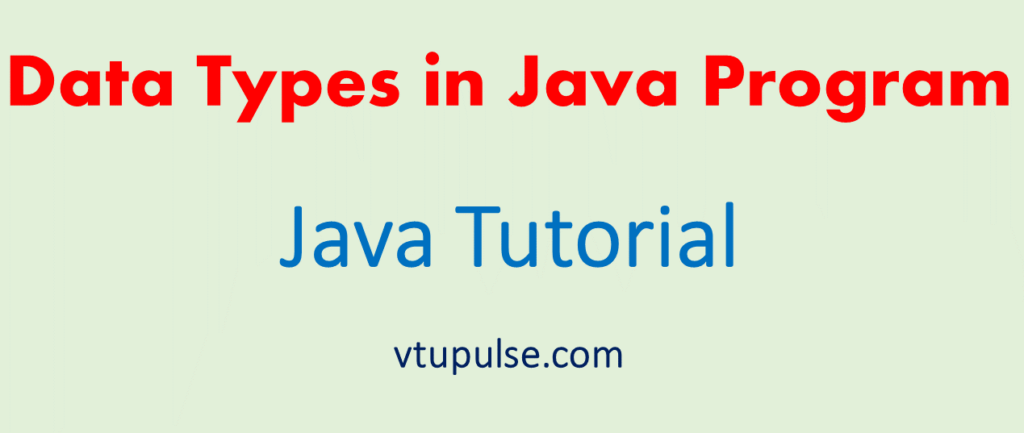Data Types in Java Program – Java Tutorial

Problem Statement
List and Explain different data types in Java with programming examples.
Solution:
Various data types used in Java are byte, short, int, long, char, float, double and boolean.
byte
This is in fact smallest integer type of data type. Its width is 8-bits with a range from -27 to 27-1. The variable can be declared as byte type as
Example:
byte i, j;
short
This data type is also used for defining the signed numerical variables with a width of 16 – bits and having a range from -215 to 215-1. The variable can be declared as short as
Example:
short a, b
int
This is the most commonly used data type for defining numerical data. The width of this data type is 32-bit having a range form -231 to 231-1. The declaration can be
Example:
int p, q;
long
Sometimes when int data type is not sufficient for declaring some data then long is used.
The range of long is really very long and it is -263 to 263-1.
The declaration can be
Example:
long x, y;
float
To represent the real number(i.e. number that may have decimal point) float data type can be used. The width is 32-bit (4 bytes).
Example:
float x, y;
double
To represent the real numbers of a large range the double data type is used. Its width is 64-bit (8 bytes).
Example:
double a, b;
char
This data type is used to represent the character type of data. The width of this data type is 16-bit and its range is 0 to 216-1.
Example:
char ch;
boolean
Boolean is a simple data type that denotes a value to be either true or false.
Example:
boolean a, b;
Data Types in Java – Example Program
/* This program introduces use of various data type in the program */
class DatatypeDemo
{
public static void main(String[] args)
{
byte a=10;
short b=10*128;
int c=10000* 128;
long d=10000*1000*128;
double e=99.9998;
char f='a';
boolean g=true;
boolean h=false;
System.out.println("The value of a=: "+a);
System.out.println("The value of b=: "+b);
System.out.println("The value of c=: "+c);
System.out.println("The value of d=: "+d);
System.out.println("The value of e=: "+e);
System.out.println("The value of f=: "+f);
System.out.println("The value of g=: "+g);
System.out.println("The value of h=: "+h);
}
}
OUTPUT
The value of a=: 10
The value of b=: 1280
The value of c=: 1280000
The value of d=: 1280000000
The value of e=: 99.9998
The value of f=: a
The value of g=: true
The value of h=: false
Summary:
In this article, we understood the Different Data Types in Java Program – Java Tutorial. If you like the tutorial share it with your friends. Like the Facebook page for regular updates and the YouTube channel for video tutorials.
